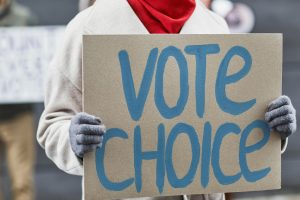Freedom of Religion in Public Education
Freedom of religion is a fundamental right that has been enshrined in the Constitution of many countries around the world. In the United States, this right is protected by the First Amendment, which guarantees the freedom to practice one’s religion without interference from the government. However, when it comes to public education, this right can sometimes be a contentious issue. Should public schools allow for the free exercise of religion by students, or should they remain neutral in matters of religion? This article will delve into the topic of freedom of religion in public education, exploring its history, current laws and policies, and how it affects students and their education.
History of Religion in Public Education
The debate over the role of religion in public education has a long and complex history in the United States. In the early days of public education, religion played a significant role in the curriculum, with most schools teaching Christianity. However, this began to change in the 19th century with the rise of public schools and the influx of immigrants from different religious backgrounds. This led to tensions between different religious groups, and the issue of religion in public education became a topic of heated debate.
Current Laws and Policies
The Establishment Clause
The First Amendment of the United States Constitution states that “Congress shall make no law respecting an establishment of religion.” This phrase, known as the Establishment Clause, has been interpreted by the courts to mean that the government cannot favor one religion over another or promote religion in public institutions. This includes public schools, where the separation of church and state is a key principle.
The Free Exercise Clause
The Free Exercise Clause of the First Amendment protects the right of individuals to practice their religion freely without interference from the government. This means that public schools cannot prevent students from engaging in religious activities or expressing their religious beliefs, as long as it does not disrupt the learning environment or violate the rights of others.
The Lemon Test
In 1971, the Supreme Court created a three-pronged test, known as the Lemon Test, to determine whether a law or policy violates the Establishment Clause. The test states that the law must have a secular purpose, its primary purpose must not be to advance or inhibit religion, and it must not result in excessive entanglement between the government and religion.
Freedom of Religion and Students
When it comes to students in public schools, their rights to freedom of religion can sometimes be a grey area. While they have the right to practice their religion, they must also follow school rules and regulations. This means that students cannot disrupt classes or infringe on the rights of other students while expressing their religious beliefs.
Additionally, public schools cannot endorse or promote any particular religion, but they also cannot prevent students from expressing their faith or participating in religious activities. For example, students have the right to pray or wear religious attire to school as long as it does not distract from their education or violate the rights of others.
The Role of Public Schools
Public schools play a critical role in promoting diversity and acceptance of different religions. While they must remain neutral in matters of religion, they can also provide opportunities for students to learn about different faiths and cultures. This can help foster understanding and respect for diversity, which is essential in a multicultural society.
Some schools may also offer courses on world religions, where students can learn about different belief systems and their impact on society. These courses are typically taught in an academic and objective manner, providing students with a well-rounded education on religion.
Conclusion
Freedom of religion in public education is a complex and often controversial issue. However, it is a fundamental right that must be protected and respected in public schools. While the separation of church and state is vital, schools also have the responsibility to promote diversity, tolerance, and respect for different beliefs and cultures. As our society becomes increasingly diverse, it is crucial that public schools strike a balance between protecting religious freedom and maintaining a secular learning environment.
In conclusion, students in public schools have the right to freely practice their religion, as long as it does not disrupt the learning environment or violate the rights of others. Public schools must remain neutral in matters of religion and promote diversity and understanding among students. By upholding these principles, we can ensure that freedom of religion in public education continues to be protected and respected for generations to come.










